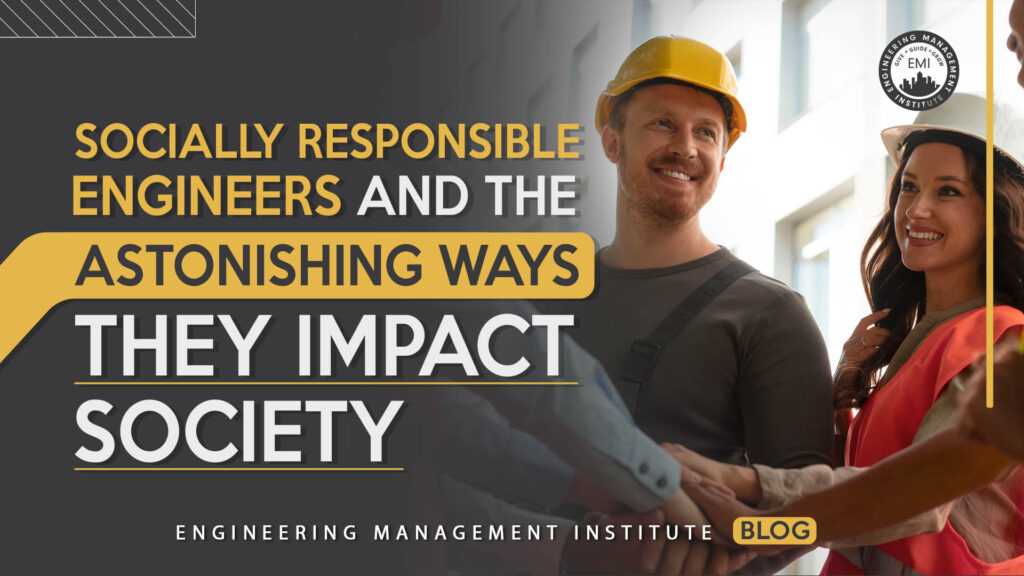In a corner of the globe where skyscrapers dominate the skyline, a different kind of revolution is brewing—below the radar, but above expectation. It’s the story of how socially responsible engineers, with their technical expertise and deep compassion for people and the planet, put humanity back into the heart of their communities. This narrative doesn’t just rely on blueprints; dreams and dedication build it.
The Blueprint of Change: Integrative Design
Imagine you walk through a neighborhood where they design every building not just for function but for the future. We’re talking about green roofs, energy-efficient lighting, and materials that lower the carbon footprint. But this isn’t a scene from a sci-fi movie; it’s reality, all thanks to integrative design. This method gathers architects and engineers, and the community at the drawing board, ensuring we hear every voice. The result? Spaces that are not only innovative but also inclusive.
Take, for example, the community center in downtown Portland. With its green roof teeming with local flora, it has become more than a building; it’s a breath of fresh air. Here, integrative design wasn’t just a strategy, but a dialogue between engineers and architects, and the people who call Portland home. The outcome? A place that’s just as vibrant on the inside as it is on the outside.
Tech Meets Tradition: Sustainable Resources
Sustainable resources have transitioned from being a luxurious addition to an essential modern living and development component. This profound shift reflects a deeper understanding of our environmental responsibilities and the urgent need to harmonize technological advancement with ecological preservation. Innovations such as solar panels that not only serve their primary purpose of generating clean energy but also complement the aesthetics of their surroundings.. Similarly, rainwater harvesting systems are ingeniously integrated within landscapes, becoming almost invisible to the eye while efficiently fulfilling their crucial role in water conservation.
Moreover, the advent of buildings that ‘breathe’—utilizing advanced smart materials and innovative design philosophies—exemplifies the pinnacle of this movement. These structures dynamically adjust to environmental conditions, optimizing energy use and enhancing indoor air quality, all while minimizing their carbon footprint. This remarkable synergy between cutting-edge technology and age-old wisdom safeguards our planet and charts a course toward a sustainable future that does not compromise on progress or comfort.
Community at the Core: Participatory Development
The Essence of Collaboration:
Building sustainable communities is a collective endeavor that requires a profound commitment to collaboration. In this method, known as participatory development, the community plays a central role. Participatory development is not just about top-down approaches; it’s about actively involving residents in decision-making. This ensures that the outcomes meet their immediate needs while being environmentally sustainable and culturally sensitive. Residents’ voices matter in this journey towards sustainability.
Celebrating Local Identity:
One key goal of this collaborative approach is to create spaces that reflect and celebrate the local culture of the area being developed. This effort goes beyond mere aesthetics; it fosters a sense of belonging and strengthens community identity. Furthermore, projects focused on sustainable development bolster the local economy. They achieve this by utilizing local materials and labor, and incorporating traditional practices wherever feasible, thus providing economic opportunities and minimizing environmental impact. Your community’s unique identity is a source of pride and strength in the journey towards sustainability.
Environmental Custodianship:
Central to this mission is an unwavering commitment to protecting the planet. This commitment involves selecting eco-friendly building materials to integrate green spaces that enhance biodiversity. Socially responsible engineers and planners prioritize designs that balance human needs with environmental preservation, ensuring that development projects contribute to a healthier planet.
Champions of Change: Socially Responsible Engineers:
Socially responsible engineers with technical expertise and deep compassion for people and the planet are leading this transformative journey. Armed with more than just clipboards, these professionals facilitate change, bridging the gap between technical possibilities and community aspirations. Their role transcends traditional engineering, embracing social advocacy and community engagement.
A shining example of this collaborative spirit is transforming a derelict lot in Detroit into a vibrant community garden. This transformation wasn’t the vision of a solitary innovator but the culmination of extensive community dialogue and shared aspirations. Engineers and architects took the time to listen and engage with residents, transforming a once-forgotten space into a beacon of community pride and a source of fresh produce.
The Ripple Effect: Empowerment and Education
Every sustainable project sparks change, creating ripples beyond the immediate community. Schools with solar-powered classrooms inspire students to pursue careers in renewable energy, and parks that use recycled water teach neighbors about conservation. This is a domino effect of empowerment and education, where each project serves as a classroom for sustainable living.
In Singapore, a rainwater harvesting system in a new residential complex educates residents about water conservation through interactive displays and workshops. This system supports the complex’s landscaping needs and serves as a living lesson in sustainability for both children and adults, highlighting the importance of our most precious resource: water.
From Vision to Reality: The Role of Leadership
This transformative approach in engineering is driven by a new cadre of leaders who have the foresight to blend technological innovation with genuine community engagement. These leaders stand apart because they approach each project with a dual focus: achieving technical excellence while enhancing the well being of the communities. By asking, “How can we make this better for everyone?” they catalyze solutions that address real-world challenges—from energy efficiency and waste reduction to improving public health and economic resilience. Their leadership is a beacon of inspiration in the journey towards sustainability.
Their leadership style goes beyond conventional project management. It encapsulates a solution-driven ethos that prioritizes sustainability and inclusivity. Moreover, these leaders advocate for participatory design processes that involve community stakeholders at every stage, ensuring that the solutions developed are culturally appropriate and broadly supported. This sustainable and inclusive approach fosters community ownership, enhances project outcomes, and solidifies the foundation for ongoing environmental stewardship and social cohesion.
By instilling these values into their projects, these leaders set new industry standards and create a legacy of impactful, durable, and culturally resonant solutions designed to last for generations. This ensures their contributions make a significant and positive difference in the world.
Bringing It All Together
So, here we are, at the intersection of innovation and empathy, where sustainable communities are born. This is where social responsibility and engineering leadership converge to create livable and lovable spaces. It’s not an easy journey, but it’s one worth taking. As we build from the ground up, we’re reminded that the best solutions don’t just solve problems—they prevent them from happening in the first place.
The key takeaway? Our most excellent resource in engineering isn’t technology; it’s our ability to listen, learn, and lead with compassion. By embracing socially responsible leadership, we’re not just building structures; we’re building hope—a sustainable future where communities thrive together.
And to all the aspiring engineers, remember: the structures we build are only as strong as the communities they support. Let’s be the architects of change, one sustainable project at a time.
About the Author: Cris Mark Baroro
Cris is currently working in VEED.io as a search engine optimization specialist. He is a tech enthusiast who loves capturing photos and videos. He loves technology and can do video editing, programming, QA system testing, and writing.
We would love to hear any questions you might have or stories you might share on socially responsible engineers and the astonishing ways they impact society.
Please leave your comments, feedback or questions in the section below.















